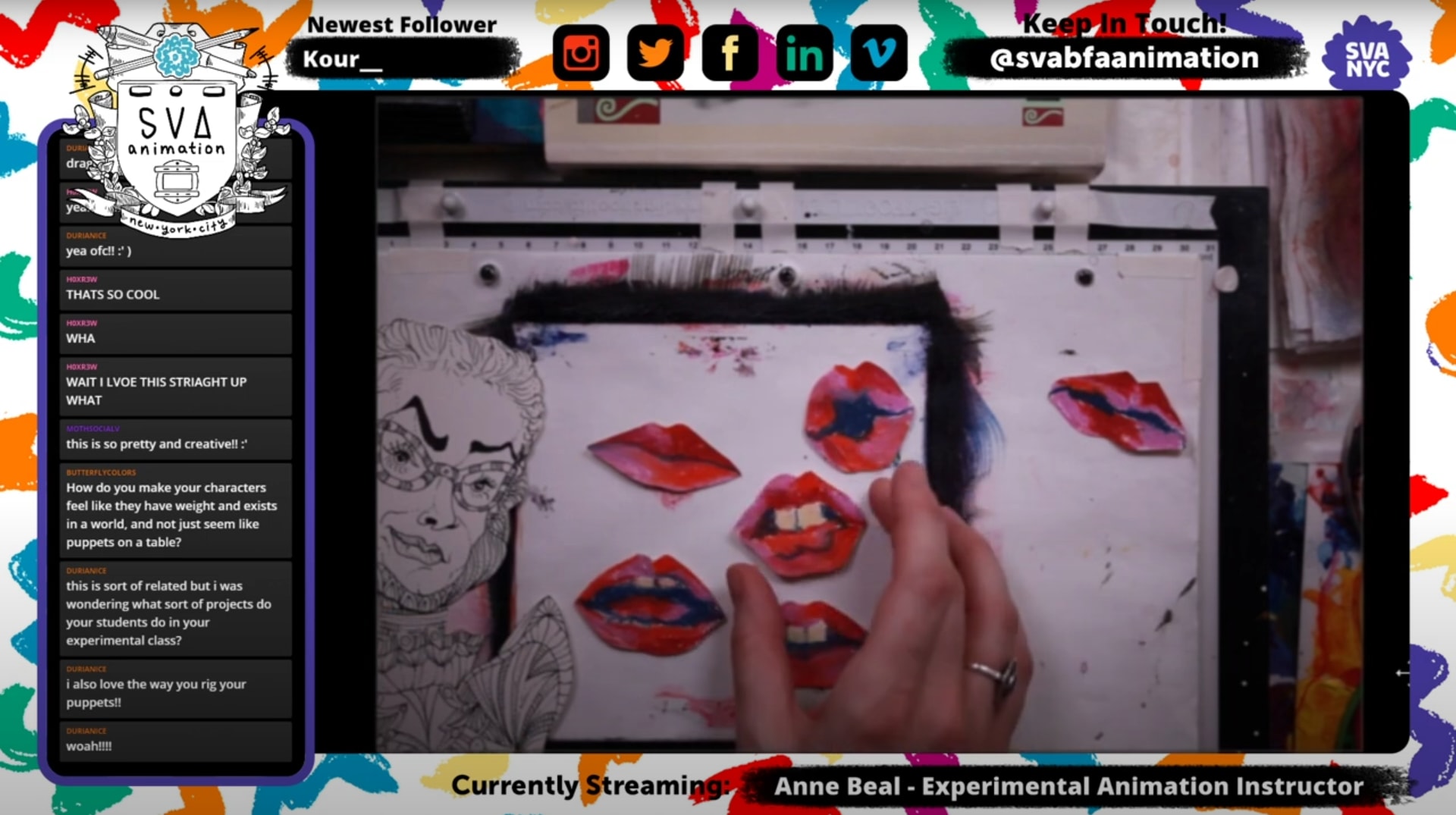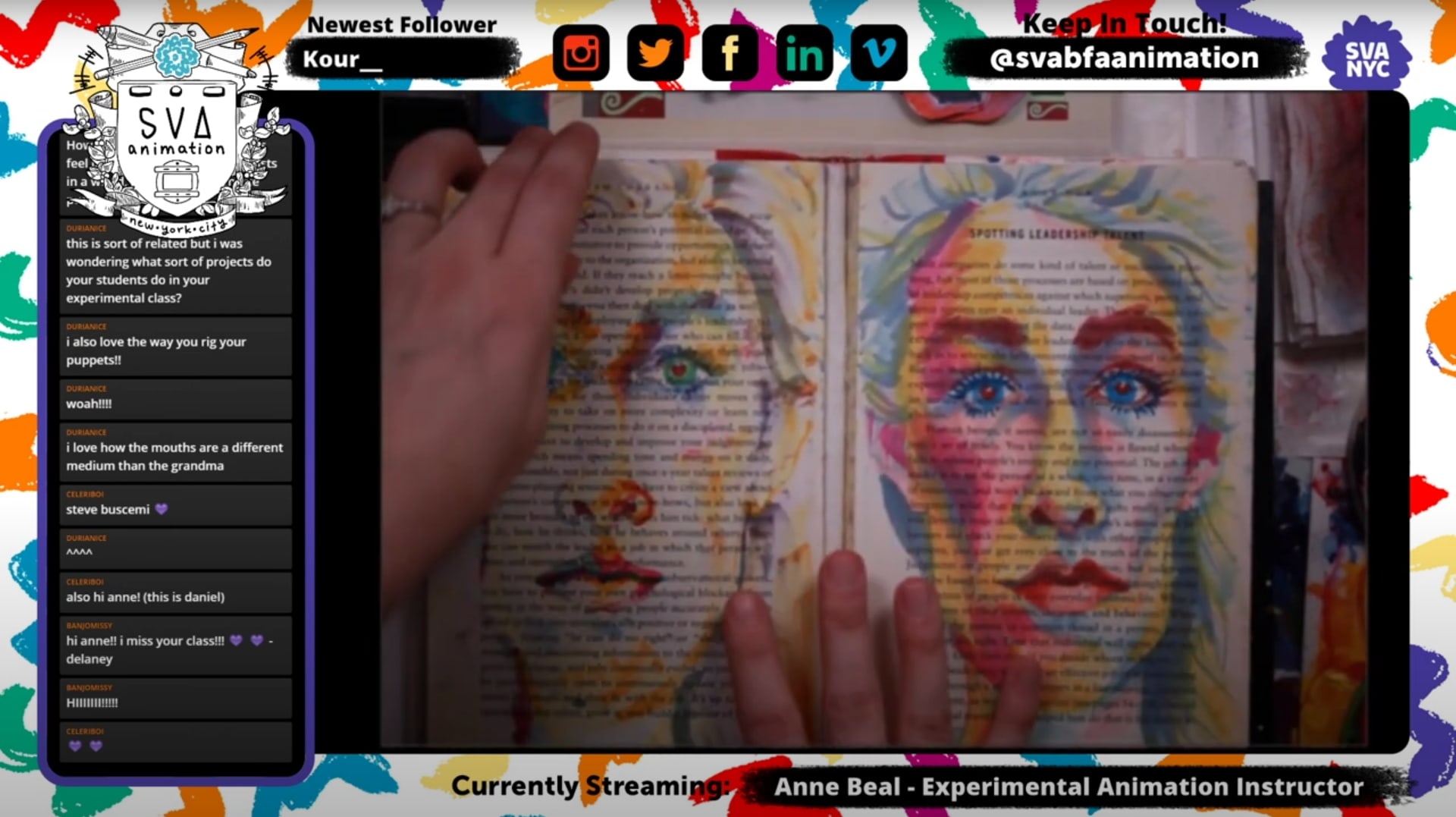SVA faculty and students take on the challenge of tech-based remote education with creativity and an open mind

Portrait artist and SVA faculty member Marvin Mattelson conducts class via Zoom.
By his own admission, Marvin Mattelson is not the first person you would suspect to know how to use an Elgato Stream Deck. Pre-pandemic, the longtime artist and illustrator—who celebrates his 50th year as a School of Visual Arts faculty member next year—“knew less than nothing” about video production and online broadcasting, he says. Today, the art studio at his Long Island home is rigged with three PTZ (pan-tilt-zoom) cameras, a professional-grade video control panel and the aforementioned stream deck, a device whose 32 LCD keys can be pre-programmed for any number of live-streaming tasks, like adding a split-screen to the video feed. “It was designed for gamers,” Mattelson says. He uses it to teach portraiture.
What does a fully remote art and design education look like? Before the pandemic, this was not a question for SVA to answer. Though its Continuing Education Division had long offered online courses, and its MFA Art Practice, MPS Digital Photography and MFA Visual Narrative programs are all low-residency, the great majority of the College’s activity took place, as it always had, in the workshops, studios and classrooms of its Manhattan campus.
And yet, by the time you read this—and despite a limited reopening of its residence halls, library and select studio spaces last fall—it will have been more than one year since SVA moved its classes online. The College is now on the verge of holding its second virtual commencement exercises and in the midst of its second round of virtual thesis shows and year-end presentations—milestones that would have seemed unimaginable in early 2020.
To be sure, the experiences of remote learning and teaching have been varied—dependent as they are on the individual circumstances of each student or faculty member. But this period has also been one of surprising discoveries and advancements, the best of which will likely influence or even directly carry over into post-pandemic life at SVA.
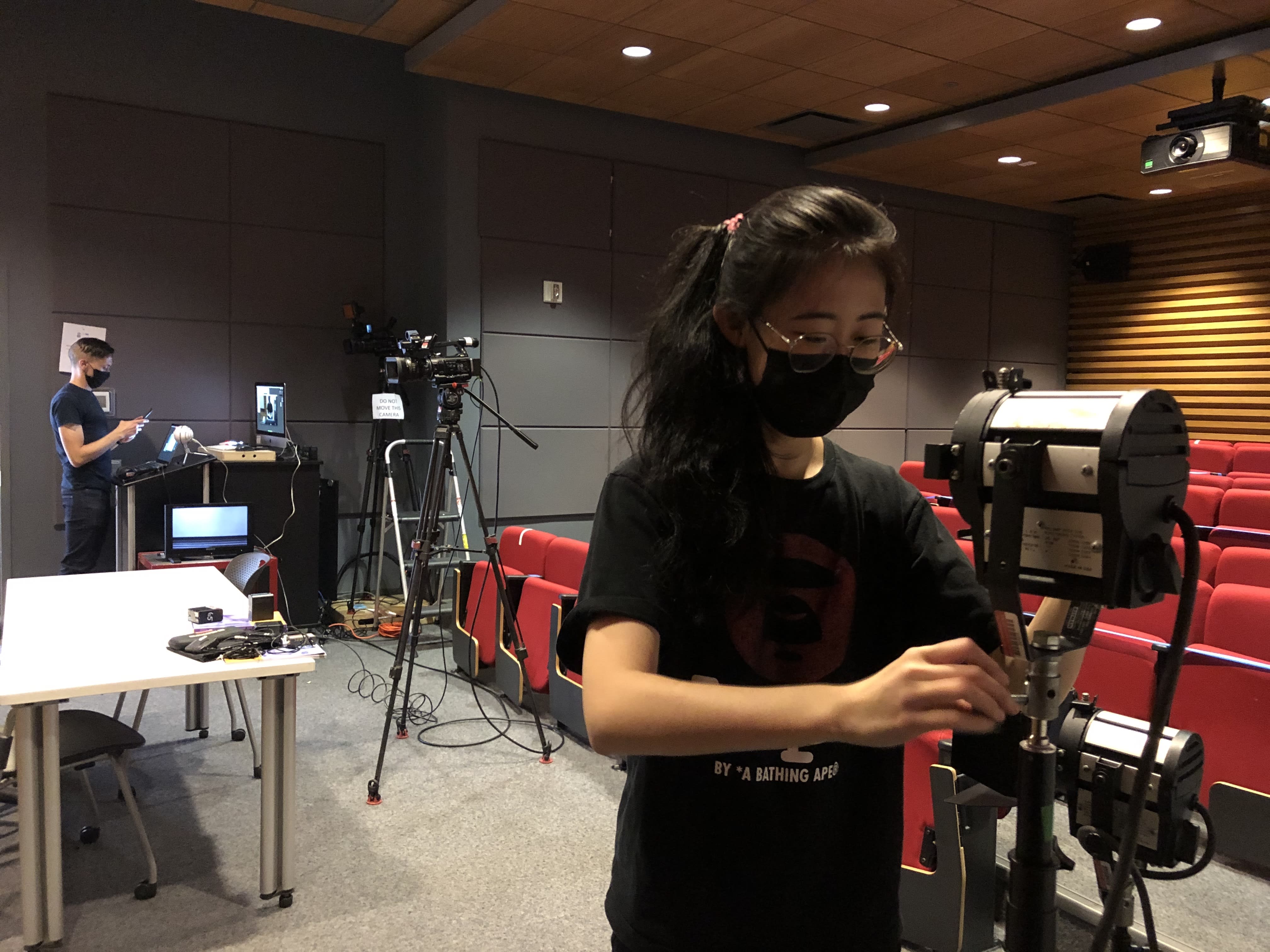
MFA Social Documentary Film staff outfit the department theater with cameras.

During the pandemic, MFA Social Documentary Film faculty have been able to use the department’s theater to conduct their remote classes.
SVA faculty arrived at a range of solutions to make teaching over Zoom as dynamic and true-to-life as possible. Andrew Chang (MFA 1987 Illustration as Visual Essay), faculty member and director of the Office of Programs for International Students, uses a combination of LEDs and task lamps to re-create the effect of daylight for his watercolor painting class. MFA Social Documentary Film installed multiple cameras in its on-campus theater so that its faculty could use the space, rather than their homes, to conduct classes and record instructional videos. BFA Illustration instructor and cartoonist Steve Brodner rigged a camera system that follows his hand as he draws for his students.
Similarly, under Mattelson’s setup—which has gone through a number of improvements since he began online instruction last spring—the cameras can zoom in close on his canvas, paintbrush or palette as he teaches, offering clearer views of his demonstrations than students would have in their usual class setting, with everyone crowded around his easel. His control panel allows him to switch between video feeds without having to set down his brush, and with the stream deck he can overlay video on his screen (picture-in-picture), so that students can see the reference photo he’s working from.
The online space has offered other benefits, he says. “In the classroom, I would be going from student to student to critique their work. Online, everybody hears everybody’s critique and feedback.” This can be helpful, Mattelson says, because “a lot of challenges students have are not unique to themselves.” Using Photoshop, Mattelson can place students’ work side-by-side with their reference photographs as well as directly alter their images to show them even the subtlest differences in color, shadow and composition.

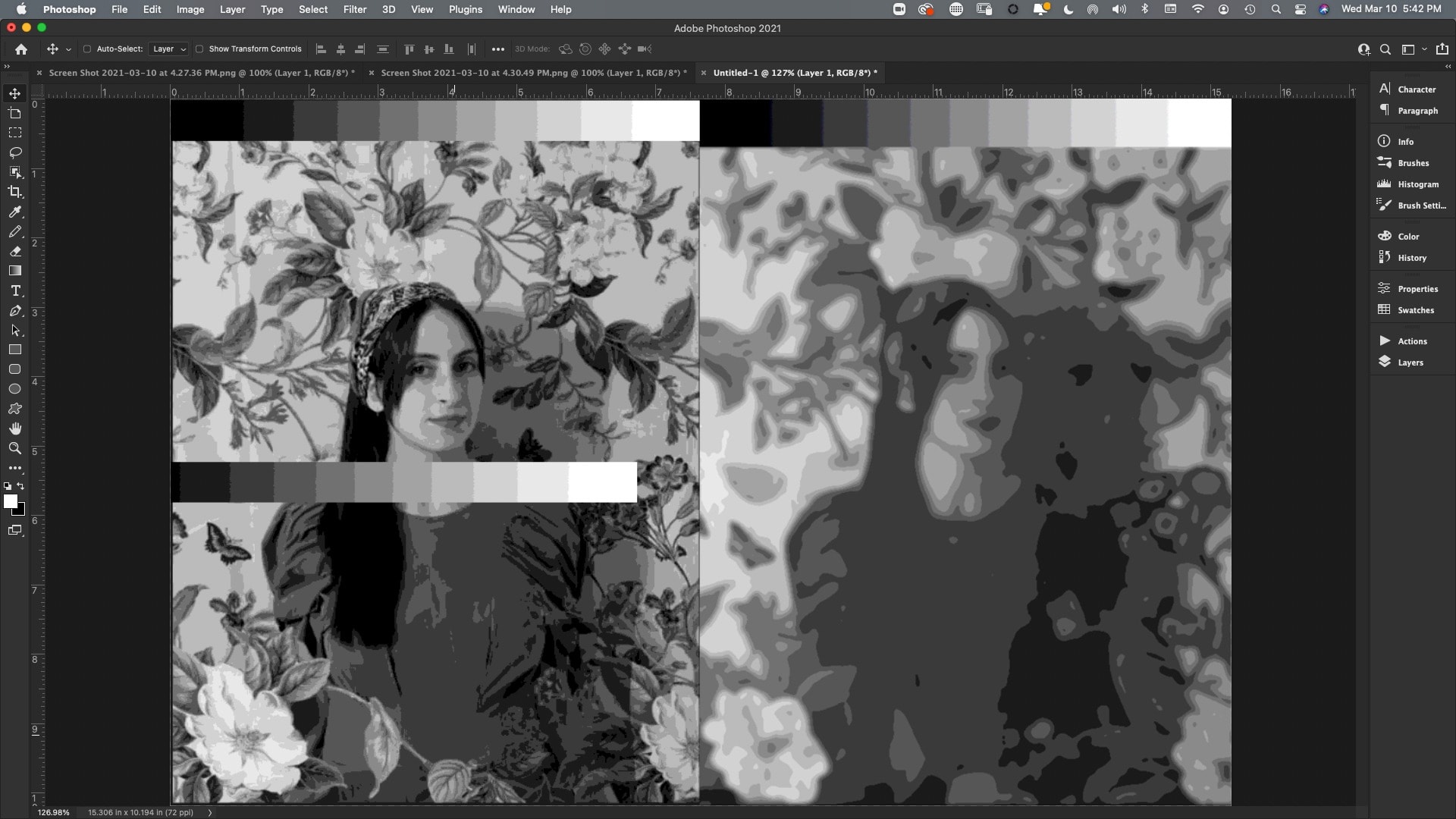
Top: SVA faculty member and portrait painter Marvin Mattelson conducts a class demonstration on Zoom. Above: By using Photoshop, Mattelson is able to digitally alter images of students’ work to illustrate even the subtlest changes that they can make to their compositions.
To continue offering figure drawing, a foundational element of many SVA programs, the SVA Model Registry hired Kent Meister (MPS 2017 Digital Photography) to work with its roster of models and build a library of images exclusively accessible to SVA students and faculty; this archive is hosted safely and securely on the online art resource Artstor. Faculty also have the option of working through the registry to schedule remote modeling sessions for real-time classes, complete with requests for lighting and settings. (Though figure drawing traditionally uses nude subjects, the models are clothed for these reference photographs and virtual sessions to protect their privacy.)
The shift from observing models in a studio to in their own homes resulted in a surge of creativity for students and faculty. Instructors have had models who are dancers lead dance classes, and students have included details of models’ spaces, like their pets or furniture, in their work. In Foundation Drawing II, instructor Carol Fabricatore (MFA 1992 Illustration as Visual Essay) asked students to choose multiple poses for a single coherent composition, adjusting the value and weight of their lines to achieve a sense of depth and keep the focus on their foreground figure.
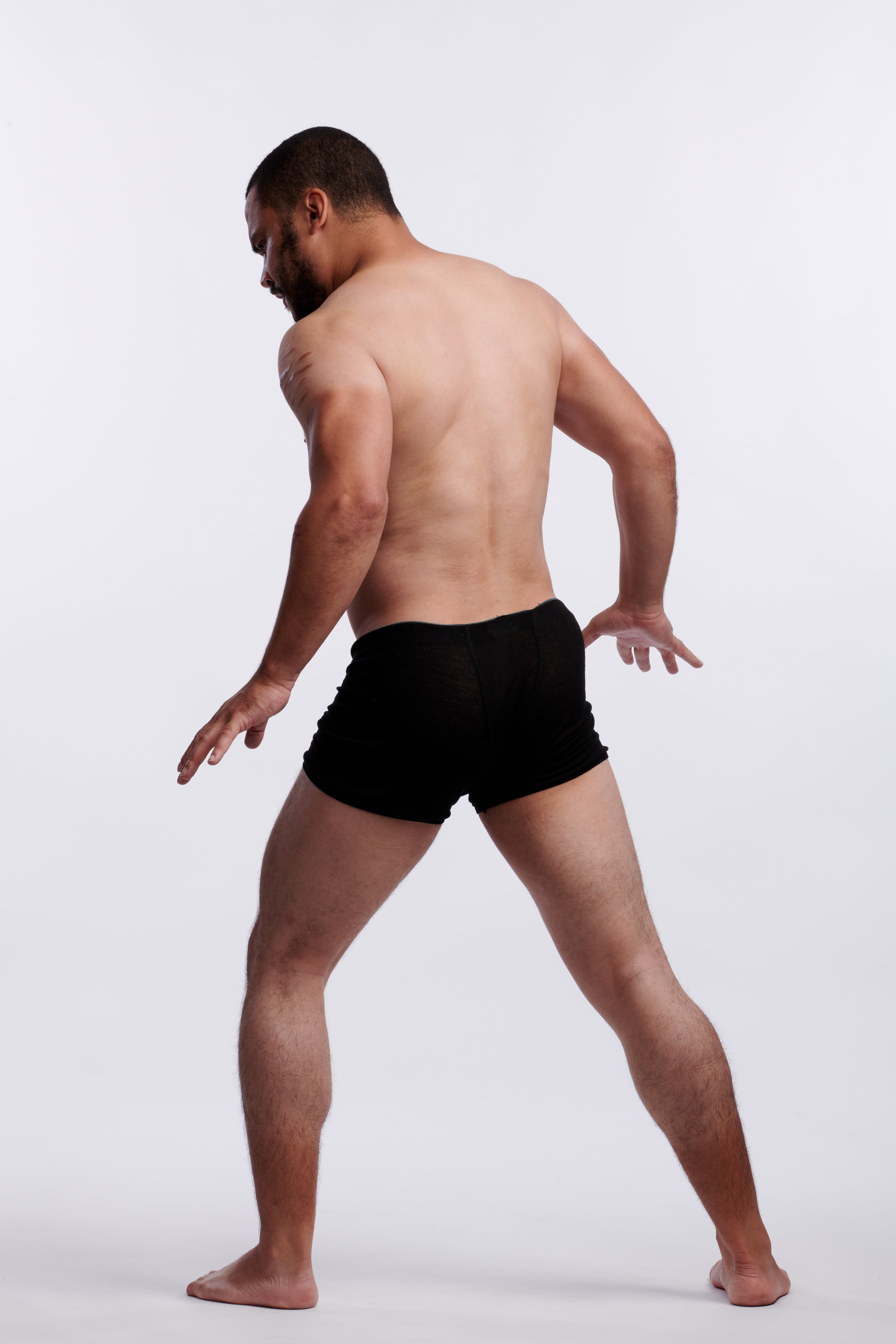

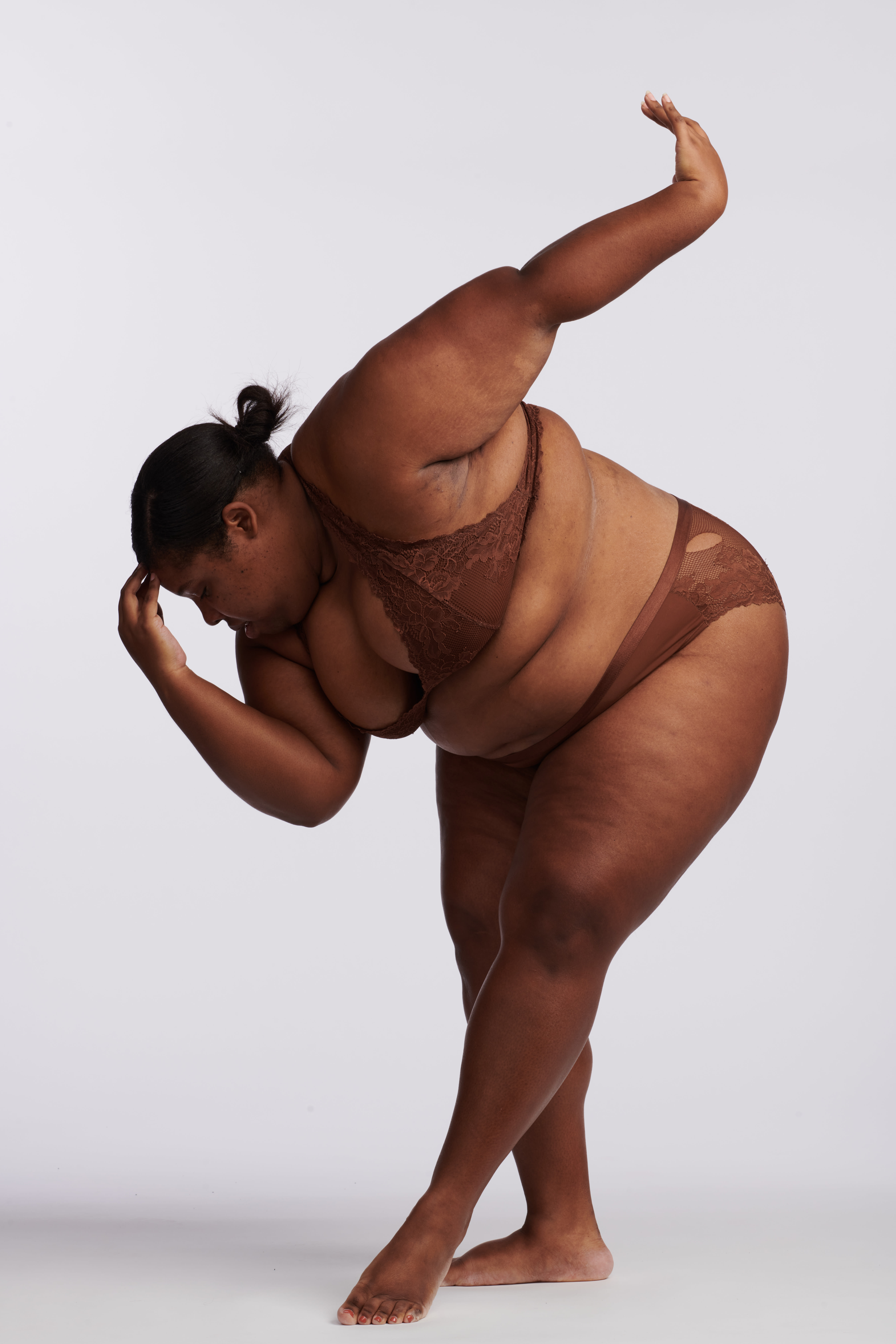
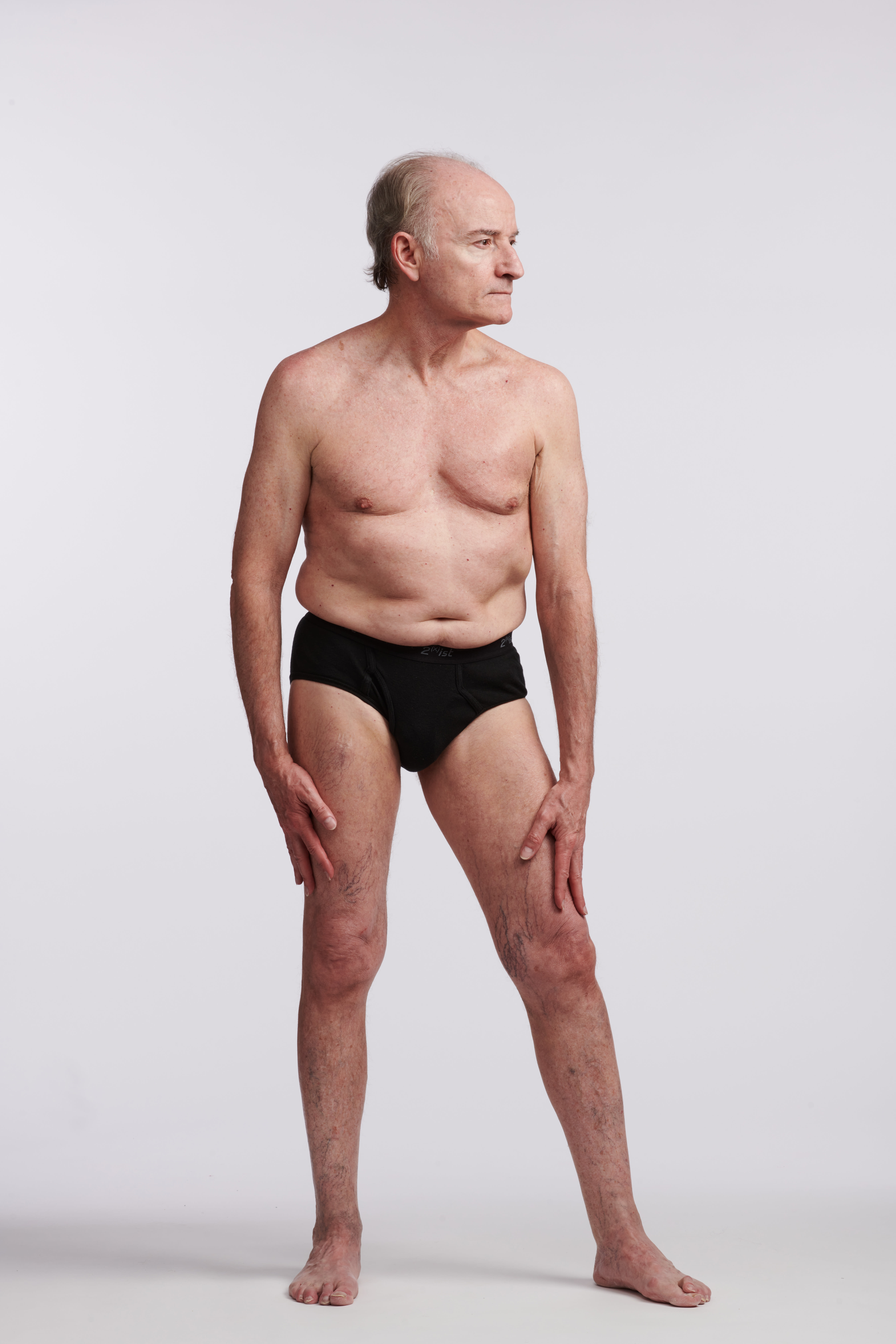
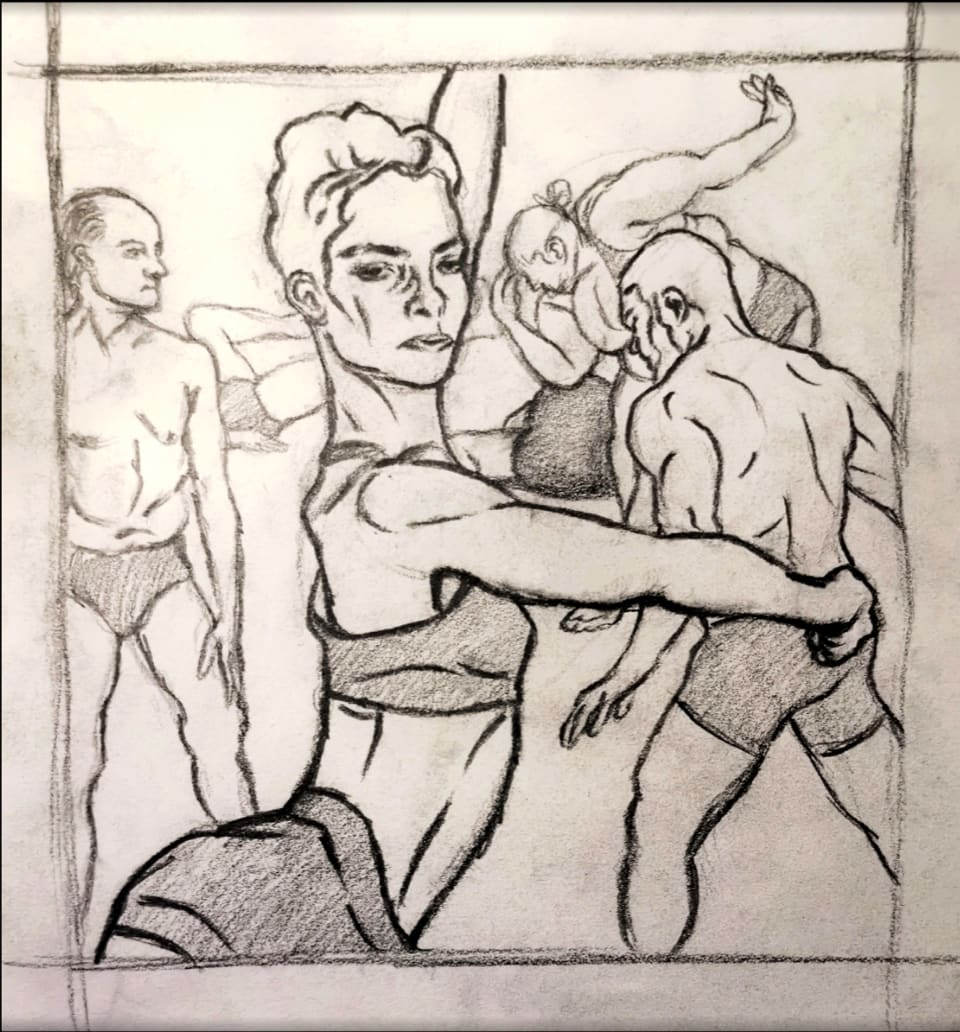
For an assignment in Carol Fabricatore’s Foundation Drawing II course, student Eason Li chose several reference photos from the SVA Model Registry’s secure online image archive to create a composition with depth and multiple figures.
“Although I think it’s best to really be there and experience the models with our eyes, I think remote learning gives me freedom to some extent, because I can choose and decide things easily and directly,” says Eason Li (BFA Design), a student in Fabricatore’s class. “I can start on ideas and experiment without being too careful as well.”
For programs already geared toward new technology, remote learning meant a chance to explore new software and lean into developing students’ skills in relevant computer programs. After testing various possibilities, BFA Computer Arts, Computer Animation and Visual Effects decided on using Teradici, NoMachine and RemotePC virtual workstations. Autodesk and Epic Unreal Engine, which have long provided the program’s students with free access to their software, continued to do so, as did other software companies like SideFX, Avid and The Foundry.
MFA Products of Design experimented with a range of options for its courses—Loom, a screen-recording platform, for critiques; Miro, a “whiteboard” platform, for collaboration; the Topia and Rally video platforms for meetings ... the list goes on. To maintain a tactile element in the curriculum, the department introduced a DIY requirement for projects: students’ designs had to be replicable with commonly available materials, and come with a set of instructions on how to make it. For her dual projects “Covered” and “Anti,” Regena Paloma Reyes created fashionable clothes that doubled as PPE, and that could be made at home with a pair of scissors, adhesive or fasteners and either an engineered protective fabric like Tyvek or something as simple as a spare shower curtain.
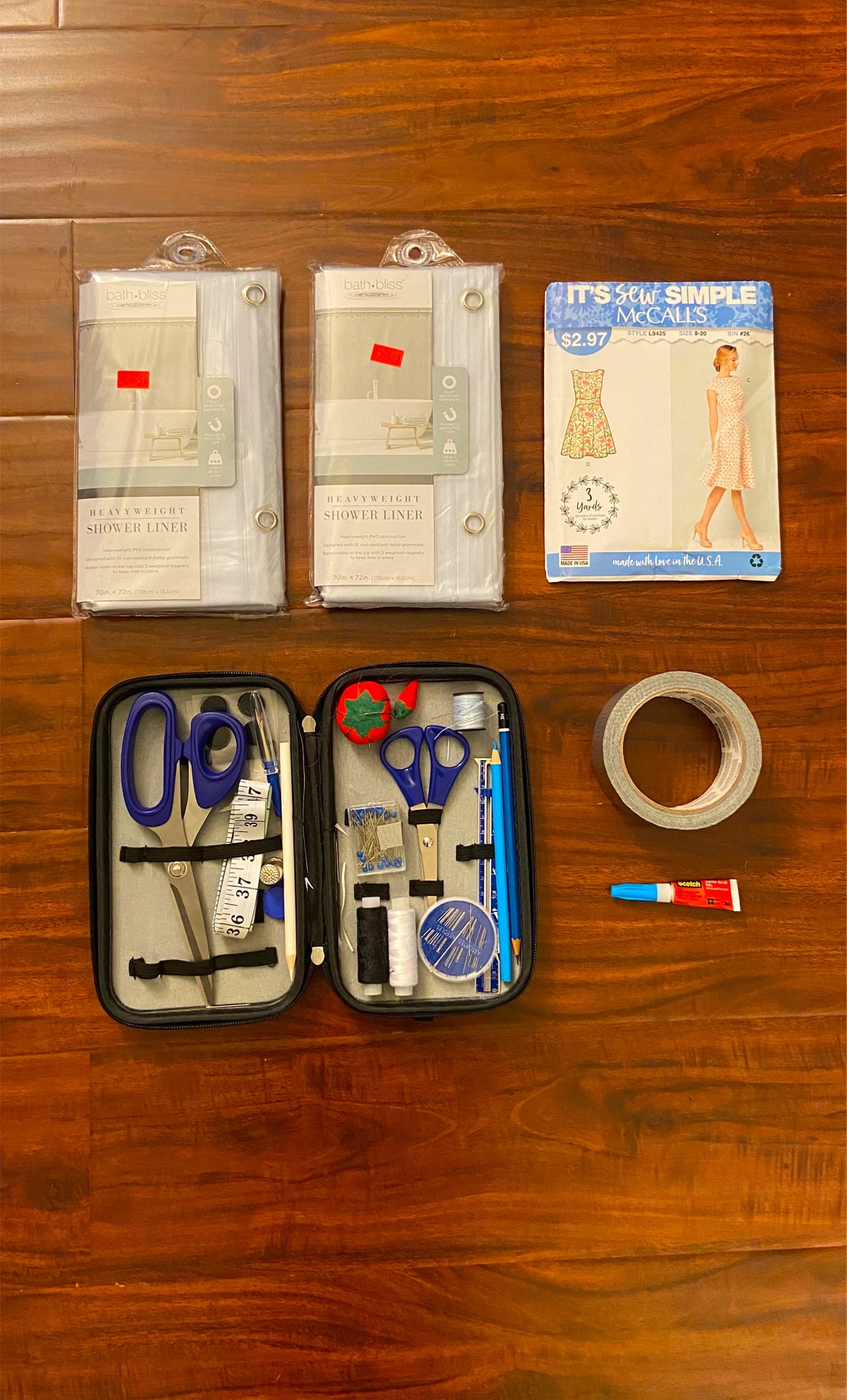

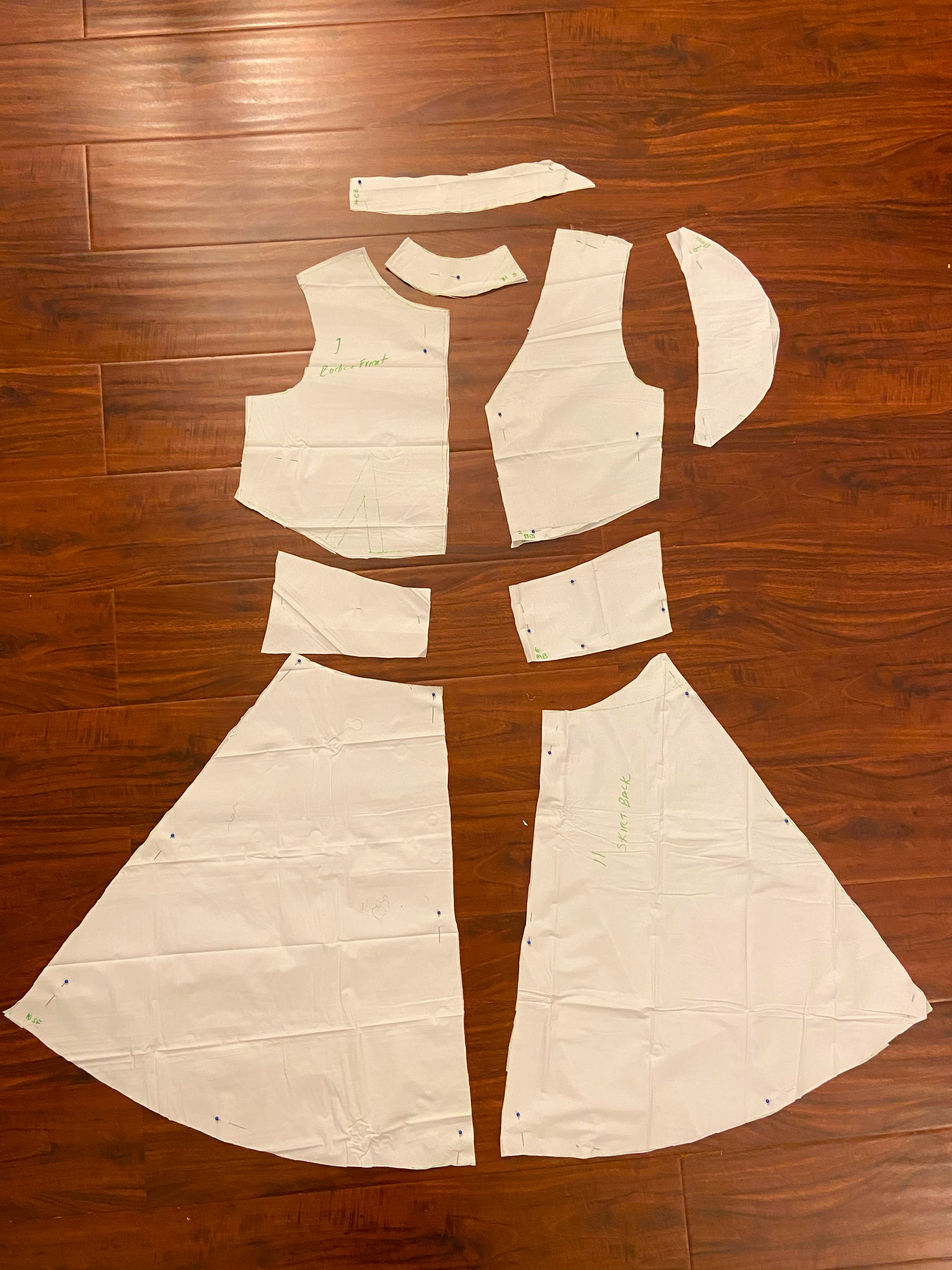
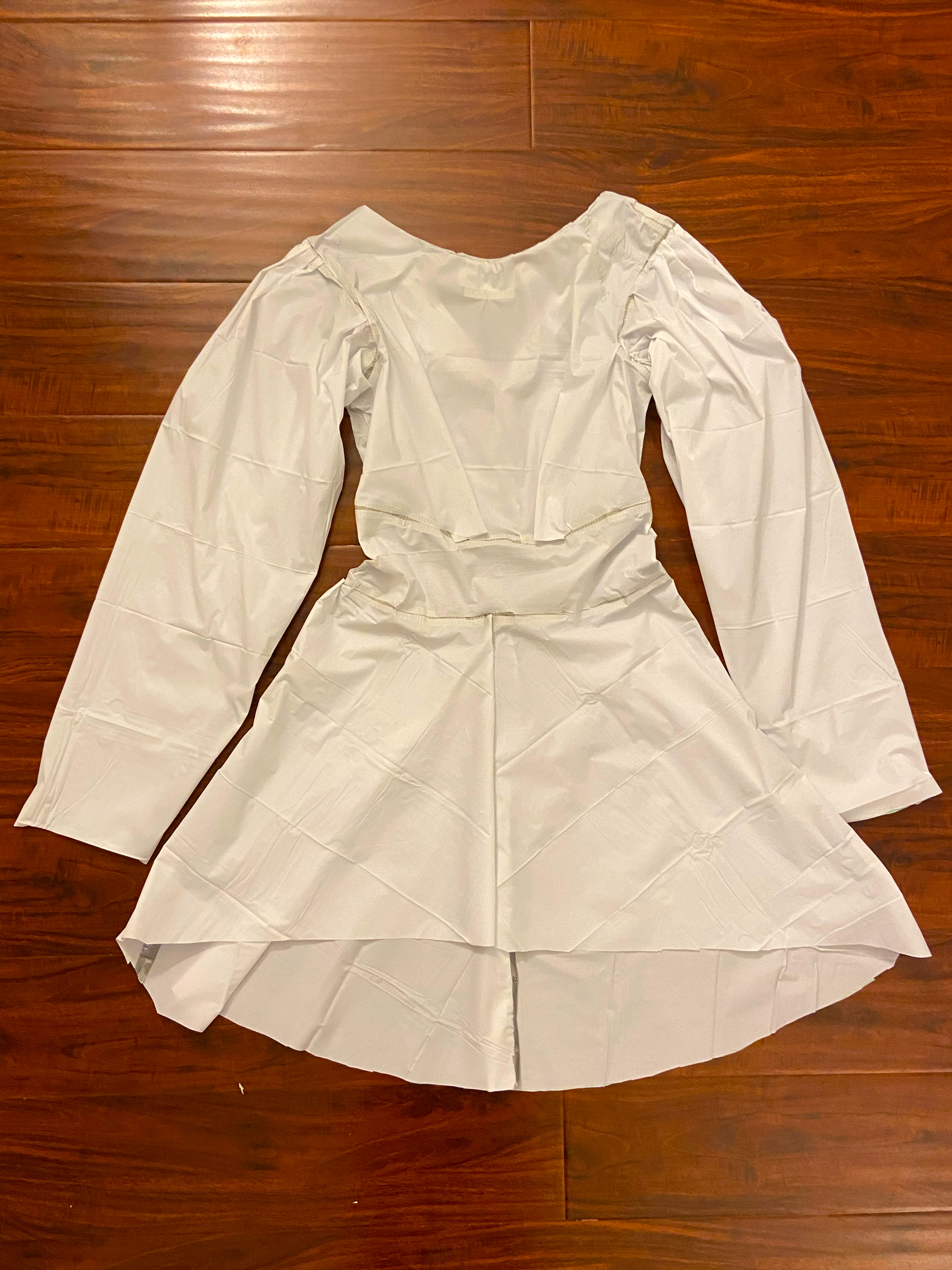
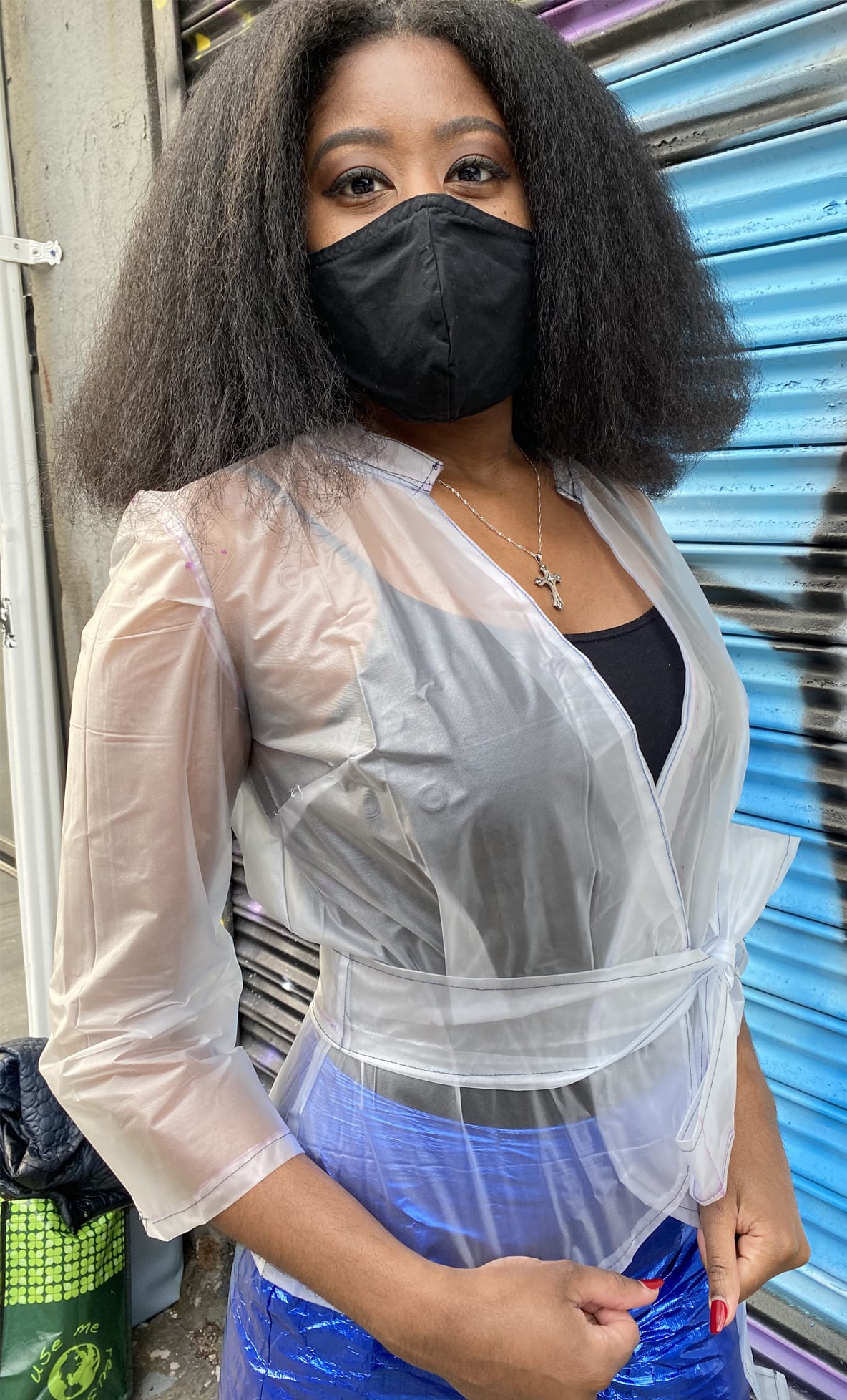
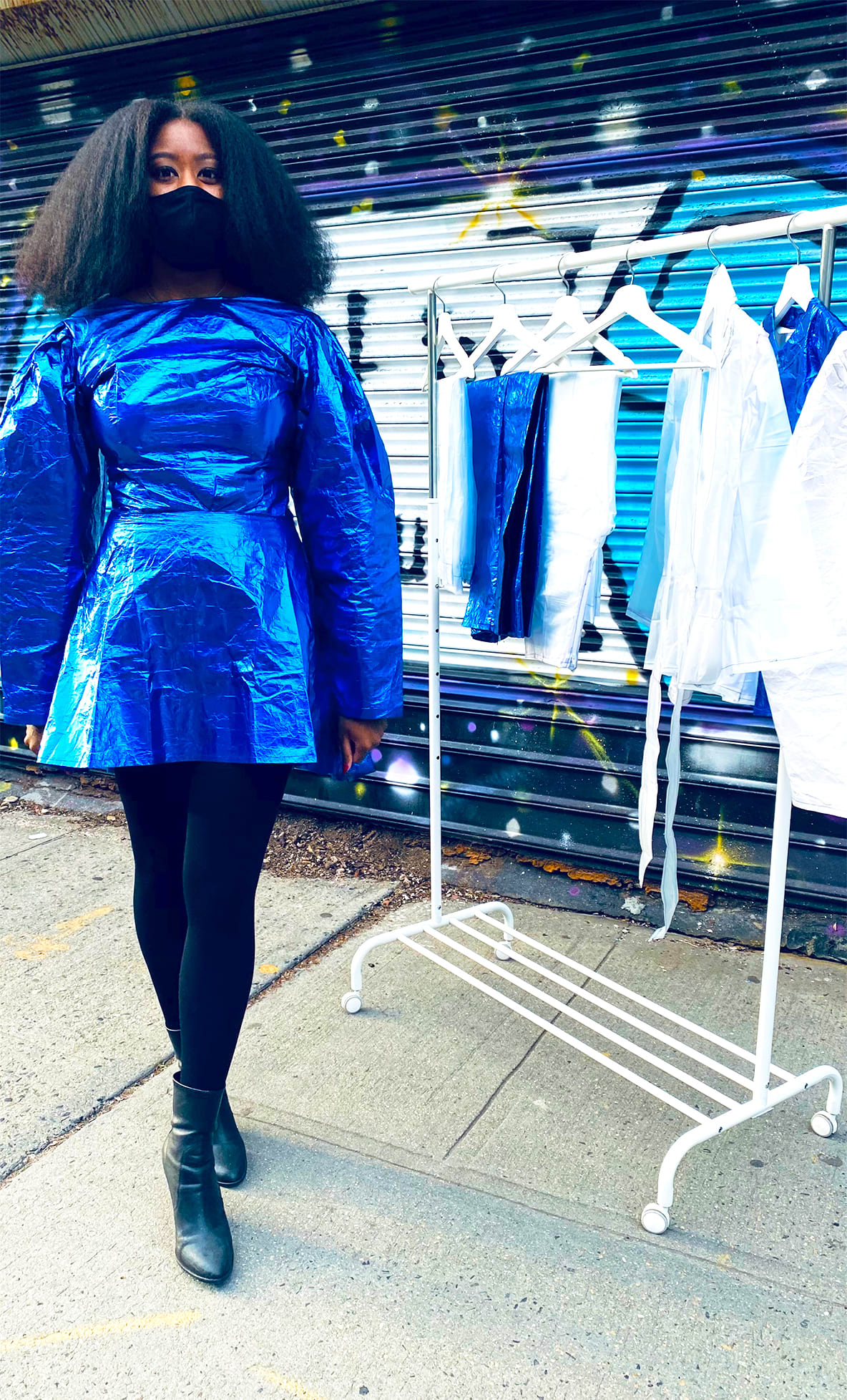
Like Reyes, a number of students have made work that addresses pandemic-related anxieties, fears or grief. Some of this work, particularly that which was produced in the latter half of the spring 2020 semester, is now part of the SVA Archives’ COVID Collection.①
For her Building Comics course, BFA Cartooning faculty member Lauren Weinstein asked students to draft comics about taking care of oneself during stressful times. The students presented their ideas to Student Health and Counseling Services and incorporated the office’s feedback; select final pieces were shared on the office’s Instagram feed, @svastudenthealth.
The practice freelance assignment offered a useful experience in working with a client and also served as a low-stakes way for the students to communicate how they and their peers were feeling with the College’s counseling services. “The one overarching theme of the work is the struggle to attain wellness—being overwhelmed, not knowing how to manage time,” Weinstein says. “So as the students worked through their edits, they also worked through their issues.”
Along with the lack of access to specialized facilities, maybe the biggest shortcoming to an all-online education is the loss of community—the events and activities that can bring students together and enrich their creative, intellectual and social lives, and the screenings and exhibitions that provide the community opportunities to celebrate each other’s work, present it to the larger world and make valuable professional connections.
The tradeoff, however, was being freed from geographical or space restrictions. By switching from in-person to online events, departments could more easily host guests from outside of New York City, and present students’ work to a wider audience than ever before. Last fall, MFA Art Practice welcomed such speakers as critic Laurie Rojas and artist Karin Sander, both based in Berlin; Baltimore-based artist and curator James William II; and artist and educator Tosha Stimage, who lives in Berkeley, California.
“Our industry thesis screening jury increased from 50 professionals to over 200 participants from around the world this past spring,” says Jimmy Calhoun (BFA 2003 Animation), chair of BFA Computer Arts, Computer Animation and Visual Effects.
Through its channel on Twitch, a live-streaming platform, BFA Animation has hosted a range of events—everything from screenings of alumni, student and faculty work to live instructor demos to open game nights—for its growing community of more than 2,200 followers.
“Streams have been a big part of online engagement for independent artists for some time,” says Sam Lee (BFA 2015 Animation), the department’s special project and program manager, “and Twitch has always been the most popular platform for this kind of engagement to happen.”


For its fall 2020 and spring 2021 open studios, MFA Fine Arts presented an online platform that incorporated individual students’ “rooms” and live artist talks, performances and presentations on Zoom.
For its fall 2020 open studios, MFA Fine Arts collaborated with artist and 2020 program alumnus Daniel Almeida to design an online platform through which viewers could check out individual students’ virtual “rooms,” join live Zoom calls to talk with the artists or MFA Fine Arts staff, and tune in to live performances and presentations. (Almeida had established another online exhibition space, Please Don’t Come to This Show, with current MFA Fine Arts student Elise Warfield and fellow 2020 alumnus Jason Elizondo, last spring.) Students Alexander Si and Stephanie McGovern also assisted in organizing and designing the space. On its opening night, the site logged approximately 250 unique visitors from around the world; in subsequent weeks that tally increased by nearly 500. This semester, the department invited graduating students Alex Angel, Ruj Greigarn, Paulina Mendoza Valdez and Anthony Reamer to work collaboratively on an update for its spring open studios, which are online now.
First-year MFA Fine Arts student Xayvier Haughton, who lives in Jamaica, filmed himself creating his installation work The Gathering of Memory—a meditation on cultural stereotypes about Black men and the Black male body—for the fall open studios. He says events such as these, as well as less formal meetups on Zoom with faculty and fellow students, have helped foster a sense of community within the program.
“I’m excited to come and meet everyone, they’ve been extremely supportive,” he says. “Everyone’s stuck in their little corner, but being in this cosmopolitan group and seeing all of my peers’ work has been motivating me to be productive during a time of high stress, when productivity is not on your mind.”
In the summer, Peter Hristoff (BFA 1981 Fine Arts)② began leading free virtual drawing sessions, open to the public, including a 90-minute “marathon,” in which participants made a series of 30 free-flow illustrations, paintings or drawings. This has been one of many such free events hosted by Continuing Education, which regularly welcome anywhere from 80 to 200 attendees. The division has also found success with moving its residencies online.
“We started in summer 2020 when we had no choice but to migrate online,” says Keren Moscovitch (MFA 2005 Photography, Video and Related Media), associate director of Continuing Education and faculty member of Art History and BFA Photography and Video. “It was so successful that we offered online fine arts residencies in the form of our Artist Residency Project in the fall and winter.” Collaborating with the artist-run gallery Tiger Strikes Asteroid, each session concluded with a “PDF exhibition”—a free download of the artists’ work that could be printed and installed anywhere in the world.

It is too early to know which of the many innovations that have been made over the past year will continue after in-person education returns to SVA. Certain improvements to the pace and immediacy of long-distance learning will pale in comparison to the experience of faculty and students being together again in the same place. Other benefits, such as the use of online platforms for asynchronous critiquing, may prove more durable.
For his part, Mattelson, who says he is “beyond thrilled” with how well his remote classes have turned out, plans to continue offering online portrait courses, through Continuing Education. He also hopes to keep teaching all of his demos, even for in-person cohorts, over Zoom, given the unparalleled clarity and detail that he believes the real-time video platform provides.
“The mindset of, ‘This is traditional painting, therefore you have to teach it traditionally’—that’s a foolish thought,” he says. “You know, ‘Rembrandt didn’t use a digital camera.’ Well, Rembrandt also didn’t have penicillin or pasteurized milk. The utilization of technology, even when you’re working with traditional methods, is really the way it should be. Why not? Throughout history, artists have employed whatever tools it took to give themselves the best chance of excelling.” ❁
Maeri Ferguson is the manager of media relations at the School of Visual Arts.


